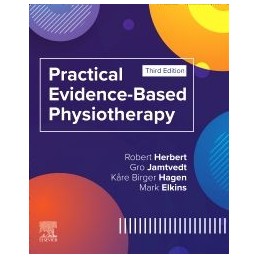- Reduced price

Order to parcel locker

easy pay


 Delivery policy
Delivery policy
Choose Paczkomat Inpost, Orlen Paczka, DHL, DPD or Poczta Polska. Click for more details
 Security policy
Security policy
Pay with a quick bank transfer, payment card or cash on delivery. Click for more details
 Return policy
Return policy
If you are a consumer, you can return the goods within 14 days. Click for more details
Practical Evidence-Based Physiotherapy is designed to help physiotherapists of all levels of expertise to use high quality research evidence in their clinical decision making.
Written by an international team of experts and comprehensively updated in its third edition, the book considers how different sorts of evidence can be used to guide physiotherapy practice. It covers emerging methods, the use of both quantitative and qualitative research, and how to use online resources.
This book will help physiotherapy students and practitioners acquire fundamental skills of evidence-based practice and clinical reasoning, quickly find and use evidence in their work, and stay up to date with the latest evidence.
Data sheet
